The brake caliper pistons of disc brakes operate under contradictory conditions: on the one hand, they must never leak brake fluid, and on the other hand, they must operate smoothly. The maintenance item for this is piston rubbing, but this operation also has another important role: preventing rust on the pistons.
- Piston rubbing for reduced friction loss without any change in effectiveness
- Pistons must be cleaned of dirt when replacing pads.
Piston rubbing for reduced friction loss without any change in effectiveness
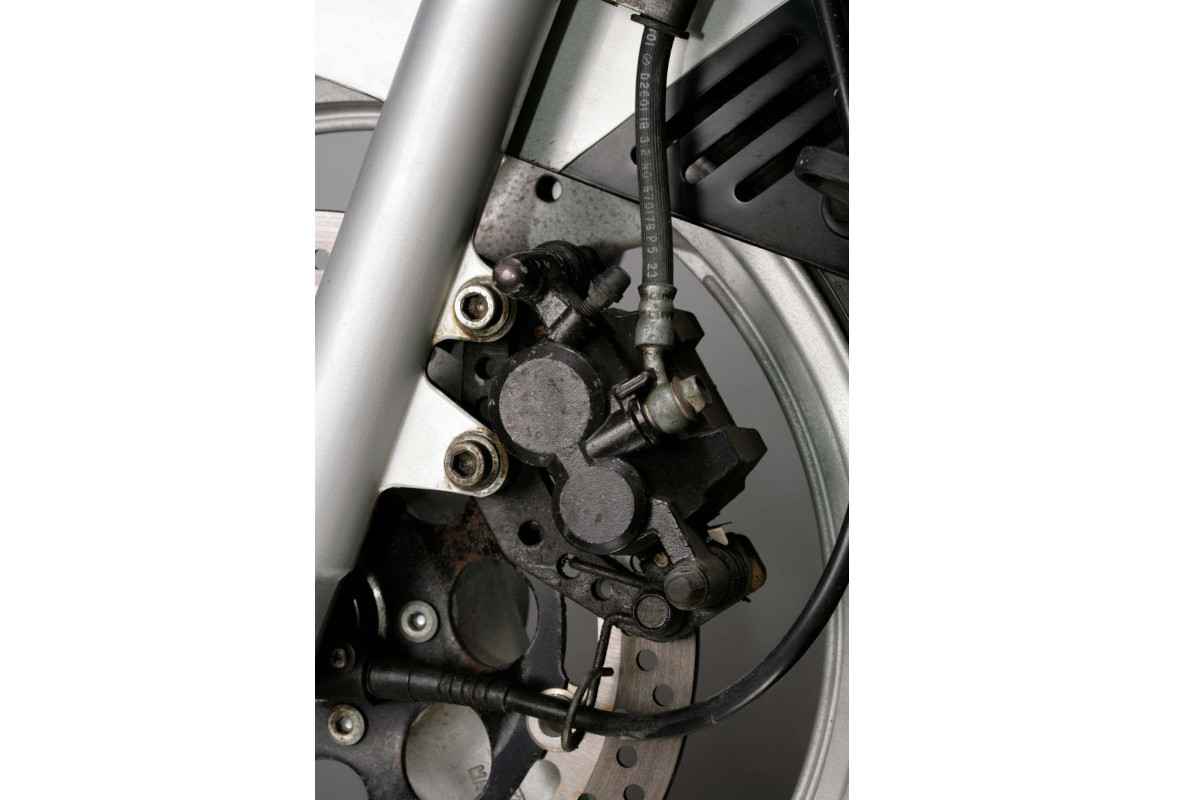

The front brake caliper on the Suzuki GSX250S Katana is a single-piston, two-piston, different-diameter type. Since it is a single-piston type, it is inevitably a pin-slide type.
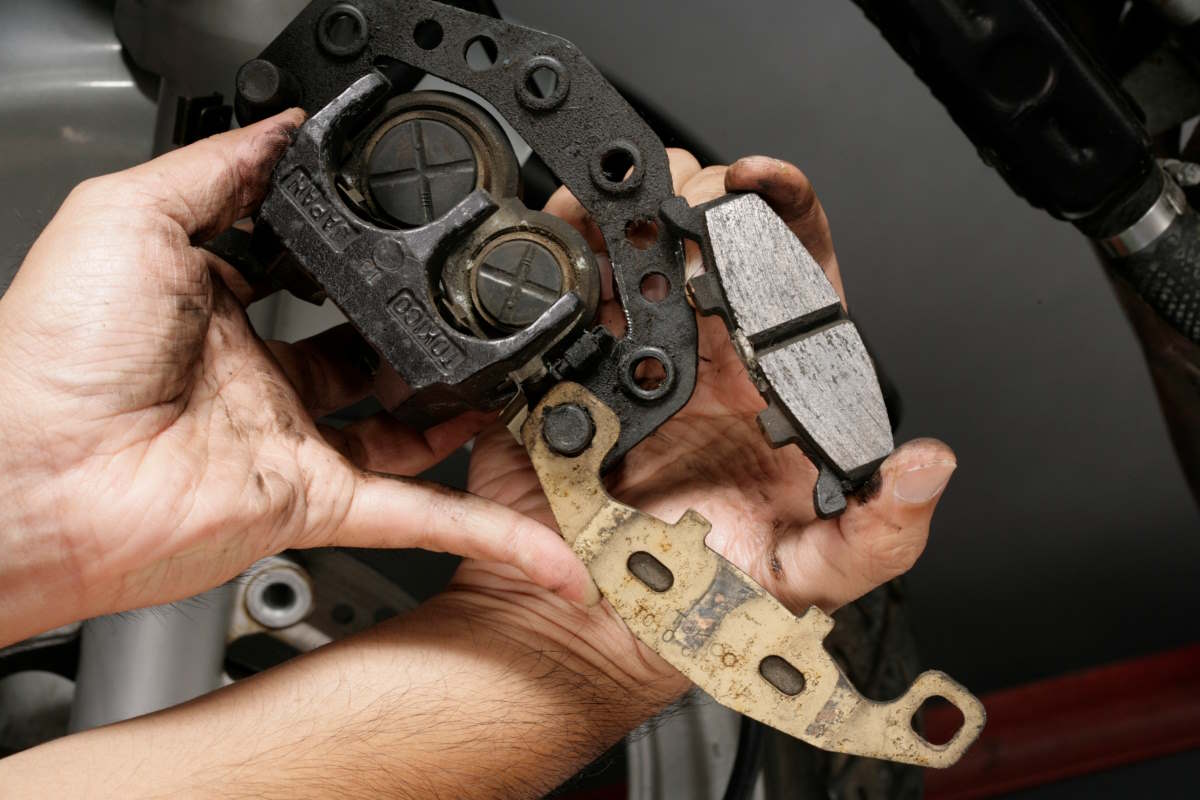

A slide pin is attached to the caliper support to secure it to the front fork, and part of this pin is the pivot shaft that supports the brake pads. This type of caliper made by TOKICO is widely used not only on Suzuki but also on Kawasaki vehicles.
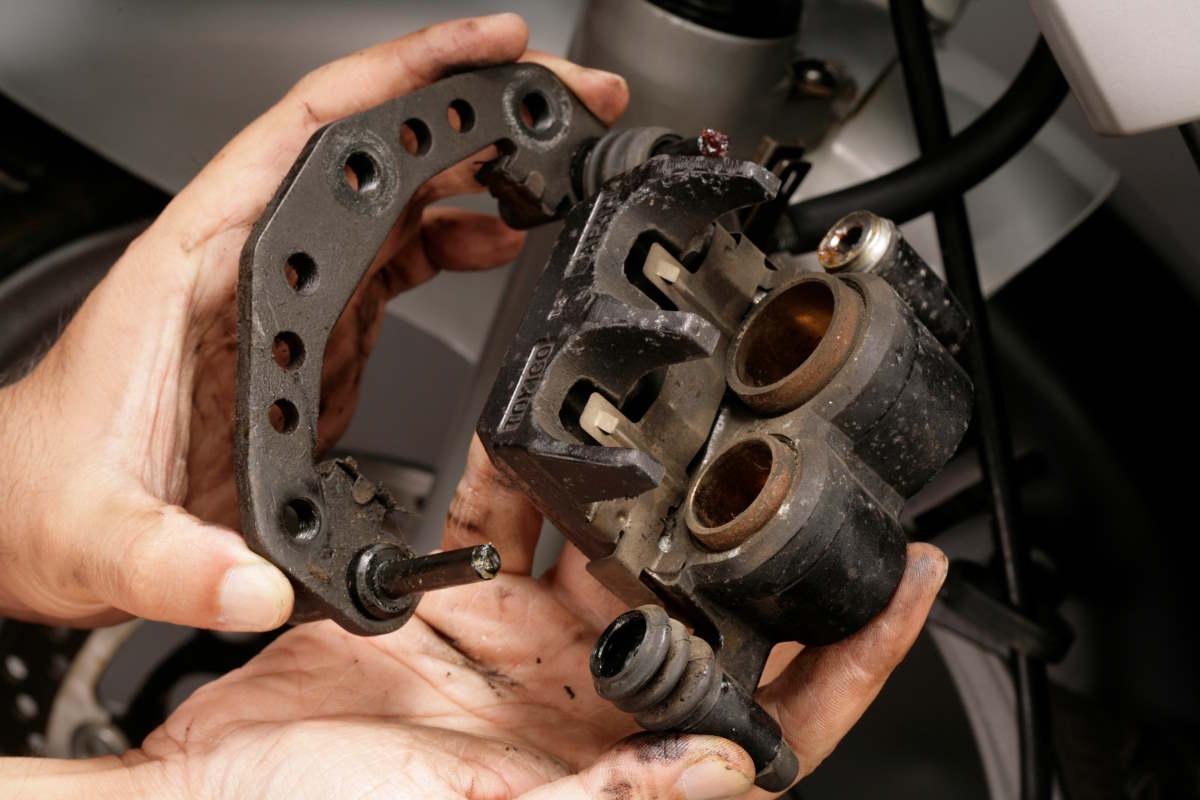

The two pins on the upper and lower calipers are inserted into a rubber boot on one side and into a hole in the caliper itself with a rubber bellows at the base of the other.
On the rubber boot side, the boot acts as a buffer zone, but on the caliper body side, where the pins are directly inserted into the caliper body, lubrication is important because corrosion can cause malfunction.
Since its commercialization for production vehicles in the late 1960s, the disc brake has been at the center of braking systems for more than half a century. Current models are equipped with them in combination with ABS, but the mechanism, in which brake fluid pressure activates the caliper piston and the brake pads clamp the brake rotor to regulate speed, is common to everything from 50cc scooters to MotoGP machines. The friction between the pads and the rotor causes the pads to wear, so it is natural to replace them when they wear out, but it is also important for the brake calipers to be cleaned regularly of pad busting (brake dust) that is generated when the pads are scraped.
Disc brake levers and pedals differ from wire-actuated drum brakes in that the amount of play does not change as the brake pads wear down. The reason for this is that the caliper pistons gradually protrude as the pads wear. The exposed caliper pistons then become covered with pad dust.
The caliper and caliper piston are in contact with each other through the rubber caliper seal and dust seal, which are based on the exquisite relationship that fluid inside the caliper does not leak and does not interfere with the smooth movement of the piston. To achieve this, it is necessary to keep the caliper seal and dust seal in an adequate state of lubrication without damaging them.
Some maintenance-conscious motorcycle users may practice caliper piston rubout, but what is its specific purpose? The above is what it is all about.
In fact, brake fluid pressure is high enough to stop a motorcycle traveling at high speed, so even a large friction loss in the piston-seal contact area rarely causes a clear reduction in absolute braking power. However, if the piston is dirty or the seal has increased friction loss, the pad may drag when the lever or pedal is released, resulting in a poor return. The response may also deteriorate in areas where the force applied to the lever or pedal is weak. Regular cleaning and lubrication can help eliminate such slight discomfort.
Pistons must be cleaned of dirt when replacing pads.
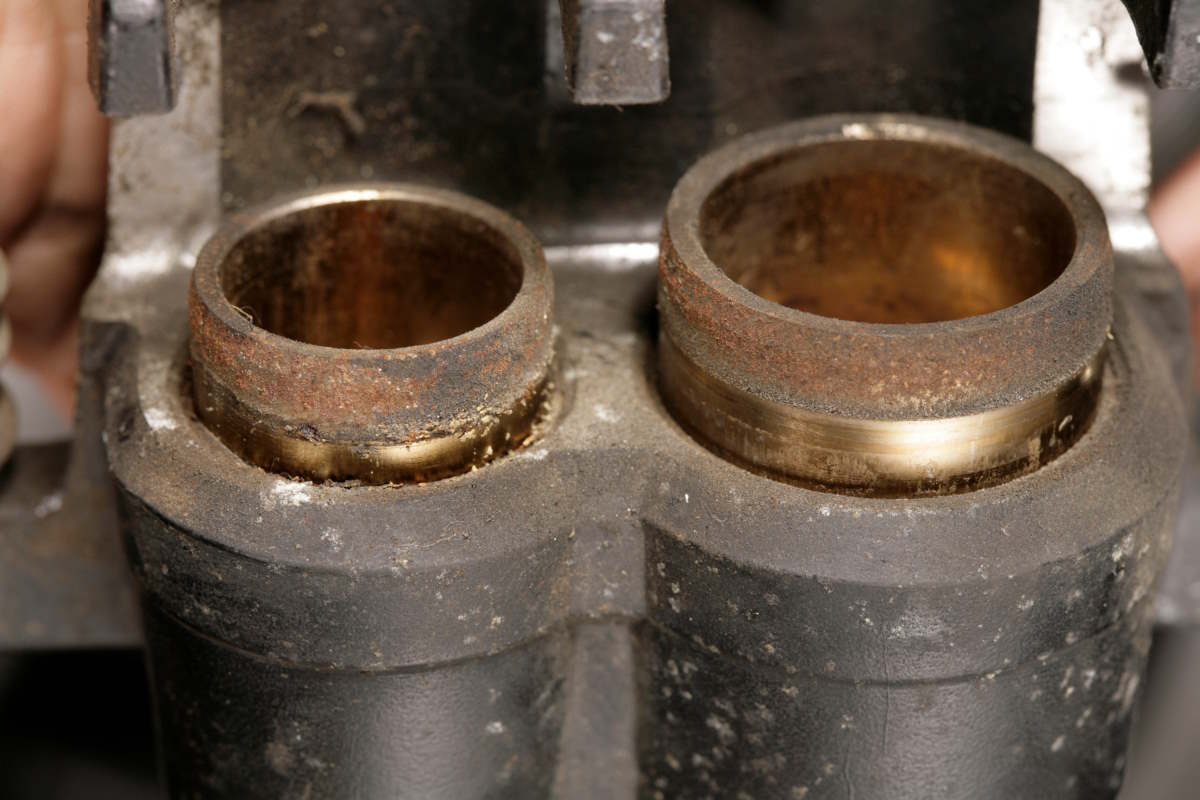

If the pads are left for a long period of time with the pistons exposed from the caliper body due to wear, pad dust will adhere to the caliper body like a collar.
The image shows a vivid contrast between the dirt and the hard chrome-plated surface with the pad removed and the piston pushed out by gripping the lever several times. If brake fluid seeps into the corners of the dust seals, it can cause them to call for moisture.
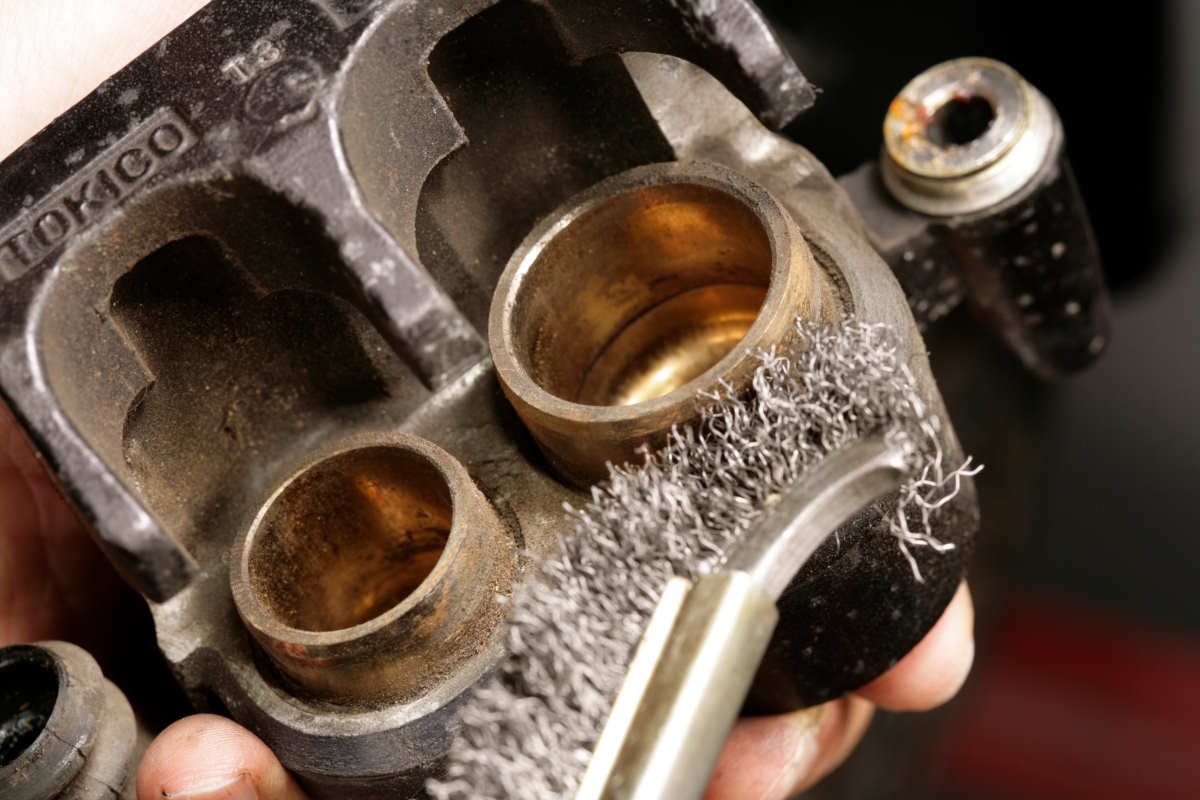

Soft dirt can be removed with a mild detergent and a toothbrush, but a wire brush is more effective for dirt that has stuck over the years. Brushing toward the inside of the caliper body risks damaging the dust seal, so it is best to operate the lever or pedal to push out the dirty part before scrubbing.


On the back side where the caliper body is in the way and dirt cannot be removed, use caliper piston pliers to turn it. If the seal bites the piston and is hard to turn, spray lubricant spray for metal and rubber and put the piston back into the caliper slightly to create a lubricating film on the contact area to make it easier to turn.
Apart from periodic cleaning outside of the pad replacement period, it is essential to always clean the pistons during pad replacement as well. When brake pads wear out, caliper pistons are pushed out of the caliper, and pad dust adheres to the periphery of the pistons. When the pads are replaced, the pistons are pushed back into the caliper, and when the pistons are pushed back with the adhered dust, the dust seals scrape off the dirt. At this time, if hard dirt is stuck to the piston, there is a risk of damaging the soft rubber seal. Even if you are fortunate enough not to damage the seal, the dirt caught in the contact surface between the piston and the seal could cause fluid leakage inside the caliper. To avoid having to replace the seals when all you wanted to do was replace the pads, it is essential to clean the pistons before pushing them back in.